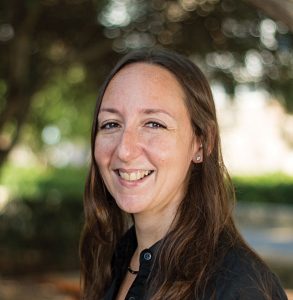To many, crystals are pretty and mysterious rocks with magical properties. But real crystals are nothing of the sort. They are groups of atoms or molecules arranged in a highly regular way. Their study is important in many fields including chemistry, biology and pharmaceuticals. Dr Liana Vella-Zarb, Dr Rosalin Bonetta and Dr Daphne Attard explain to Francesca Vassallo why crystals are better than diamonds.
Picture this: a new medicine is created. It has been designed to target a dangerous form of cancer. Contrary to many medicines which are developed through screening, testing, animal studies, and so on,this one has been designed on a computer. Its structure has been planned and the scientist knows what to expect when it is created in the lab.
Crystallographers study the regular arrangement of molecules and atoms that form solids. Structure and function are closely related. So in the same way that it is reasonable to predict that a bird can fly because it has wings, by understanding the structure of a material, scientists get hints about the material’s function.
Dr Liana Vella-Zarb (Faculty of Science) is a crystallographer and Dr Rosalin Bonetta (Centre for Molecular Medicine and Biobanking) is a structural biologist at the University of Malta.
 Vella-Zarb specialises in modifying the physical properties of materials (pharmaceuticals, pigments, agrochemicals, and others) and attempts to improve them without needing to make or break any chemical bonds through a process called Crystal Engineering. She engineers new crystal structures of the same molecule by introducing other molecules into the system, then uses diffraction techniques to solve the crystal structure and obtain a 3D image of the new material. This structure is called a cocrystal since it is made up of more than one molecule. Vella-Zarb explains that a crystal engineer’s ‘aim is to alter the physical properties of materials by design, without changing their original intended purpose, but rather enhancing their activity through optimisation of their physical performance’. In her research group, these improvements are applied to pharmaceutical compounds and others that help save Malta’s cultural heritage.
Vella-Zarb specialises in modifying the physical properties of materials (pharmaceuticals, pigments, agrochemicals, and others) and attempts to improve them without needing to make or break any chemical bonds through a process called Crystal Engineering. She engineers new crystal structures of the same molecule by introducing other molecules into the system, then uses diffraction techniques to solve the crystal structure and obtain a 3D image of the new material. This structure is called a cocrystal since it is made up of more than one molecule. Vella-Zarb explains that a crystal engineer’s ‘aim is to alter the physical properties of materials by design, without changing their original intended purpose, but rather enhancing their activity through optimisation of their physical performance’. In her research group, these improvements are applied to pharmaceutical compounds and others that help save Malta’s cultural heritage.
Bonetta examines the structure of proteins called Manganese Superoxide Dismutases that help protect the body. The proteins do this by removing superoxide radicals in mitochondria, the powerhouse of the cell that makes the chemical energy we need to live. The immune system can also use superoxides to kill disease-causing microorganisms like bacteria. Superoxide Dismutase also helps protect cells from these oxygen radicals and can suppress some kinds of cancer cells in the lab.
There is a down side to making energy since the process has the ugly flip side of forming oxygen radicals which can damage DNA and consequently cause diseases like cancer.
“With data generated and processed, crystallographers can solve its structure to create beautiful 3D visual representations of the crystals.”
Bonetta investigates these structures using high-end equipment like the Diamond Light Source (UK). This apparatus is called a synchrotron, which is a particle accelerator similar to the large hadron collider. Through a complicated procedure, the machine speeds up electrons in circles to almost the speed of light, shooting high resolution electromagnetic radiation, like X-rays, onto the crystals. With data generated and processed, crystallographers can solve its structure to create beautiful 3D visual representations of the crystals.
Dr Daphne Attard (Faculty of Science) studies the mechanical properties of crystals on computers. Her work includes testing a crystal’s auxetic properties. An auxetic material grows wider when pulled instead of thinner like normal materials (see Connect the Dots in Issue 13).
These auxetic crystals are studied using specialised software. By understanding how crystals achieve auxetic behaviour, Attard establishes the mechanism that leads to this behaviour, then analyses and modifies it. She then uses the mechanism as a template to design new auxetic materials. To assess this behaviour, Attard measures its Poisson’s ratio. The value relates to how much the material expands when stretched. If the material becomes thinner it has a positive ratio, if it thickens it has a negative ratio and is auxetic.
Designing crystals is not easy. The crystal structure needs to have very specific geometric shapes and behaviour. For example, to work in a specific way some parts of the crystal have to be rigid whilst other parts need to be flexible. Often meeting both requirements simultaneously is not possible and a compromise is needed. Designing crystals is complex!
Another difficulty is figuring out how an idealised computer model works in reality. The presence of defects in a real crystal can change its behaviour. This is difficult to model and the actual crystal behaves unexpectedly.
Crystals are much more than pretty rocks. They come in all shapes and sizes with crystallographers deciphering their structure and modifying them to make new medicines and hi-tech materials. These researchers study crystals that do not last forever but are much more useful than diamonds.





Comments are closed for this article!